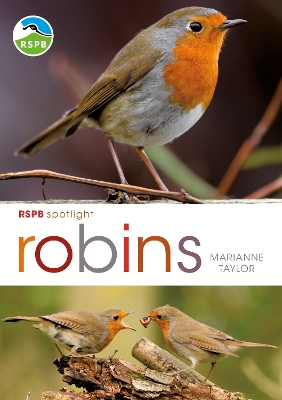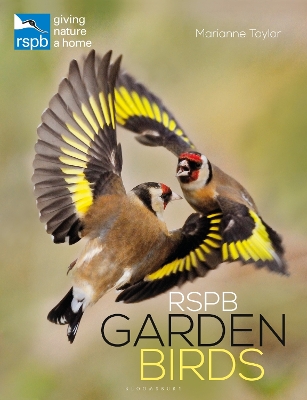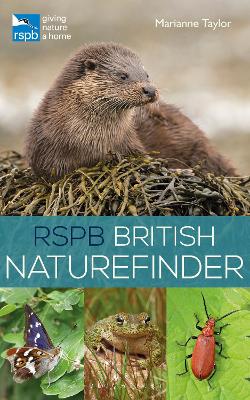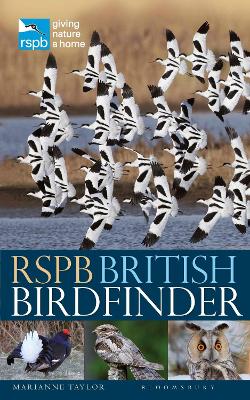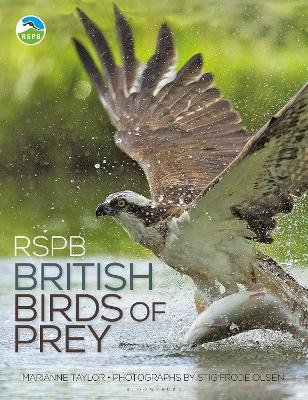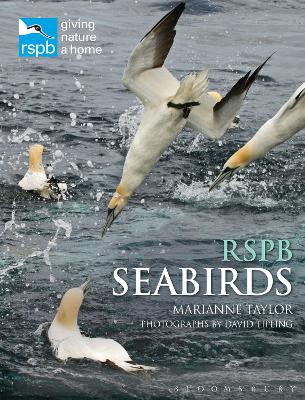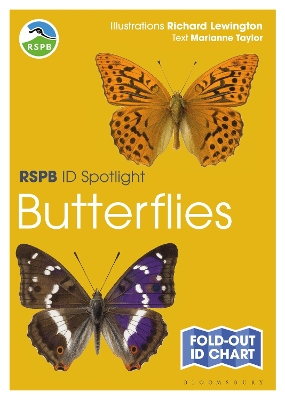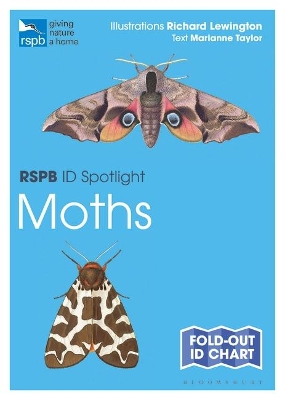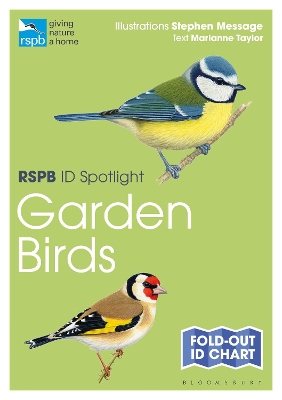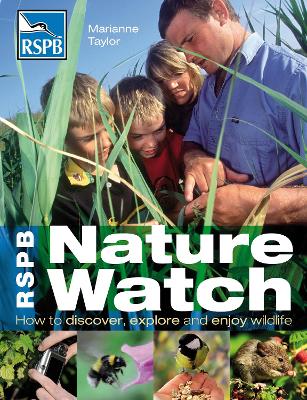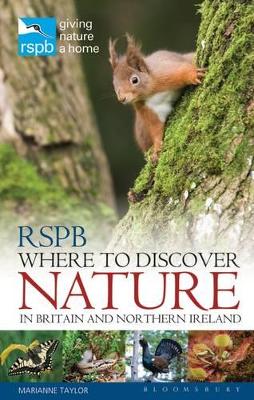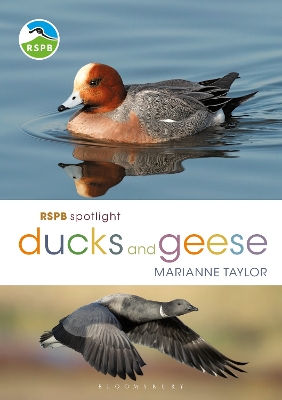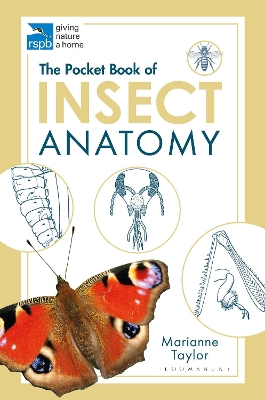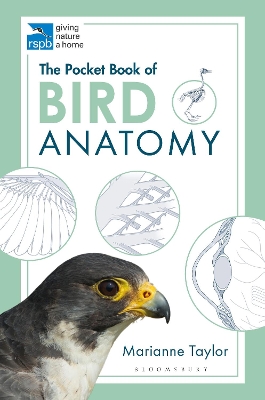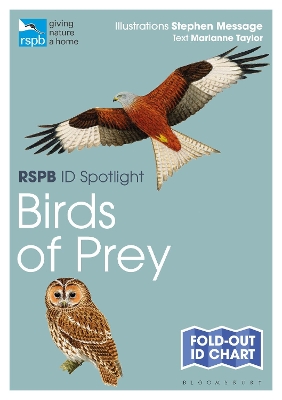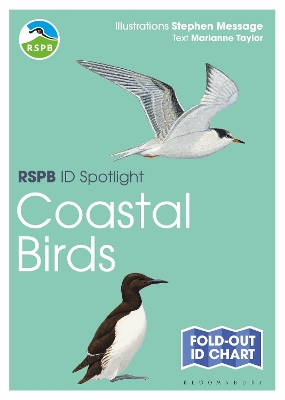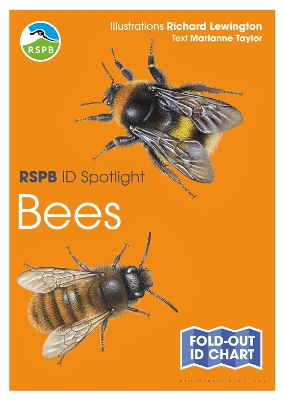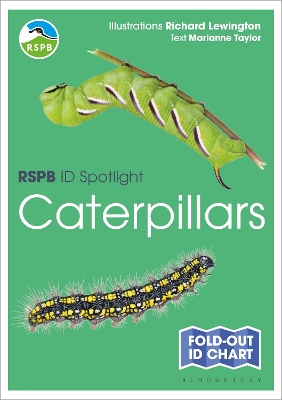RSPB
28 total works
Our most iconic bird, the Robin, is one of the most characterful and familiar of all our garden visitors. Their melodious voices, bright red breasts and cheeky attitudes always endear them to us, but how much do
we really know about them?
Despite their cute appearance, Robins are aggressively territorial and hold their territories all year. Their year-round presence has helped them become a beloved and instantly recognisable species. Now, in this delightful new book, Marianne Taylor provides a revealing account of their life cycle, behaviour and breeding, what they eat and how they hold their territories, and she looks into the many cultural
representations of these much-loved little birds.
The Spotlight series introduces readers to the lives and behaviour of our favourite animals with eye-catching colour photography and informative expert text.
Nature is facing challenges throughout the world, including right here in the UK, and the changing fortunes of our garden birds are strong indicators of the overall health of our wildlife. With information on how to encourage birds to visit our gardens and boost their survival and breeding success, and how to identify them, this book describes the small steps we can all take to help these birds survive the hardships of winter and bring forth a healthy new generation that we can recognise, appreciate and enjoy for decades to come.
RSPB Garden Birds is a lavish celebration of 47 of our most frequent and familiar garden birds, and the final chapter looks at some of the less regular - but equally welcome - visitors. Detailed biographies outline each species' life history, distribution, behaviour and breeding habits, and an extensive introduction provides guidance on the general practicalities of garden birdwatching and managing a wildlife garden. Featuring more than 200 spectacular photographs revealing every detail of our garden birds' appearance and behaviour, this book will appeal to anyone who has discovered their love of wildlife through watching the birds in their garden.
A species-by-species guide that shows you how to find and watch nearly 300 mammal, reptile, amphibian and invertebrate species in the UK.
Most wildlife books are designed to help you identify the animals you have seen. This book is different. In this new, user-friendly guide one British species is highlighted per page, and each account explains in accessible text how to find it, where to find it and how to ensure you have the most rewarding wildlife-watching experiences.
Within the ‘How to Find’ section, author Marianne Taylor explains the best time to look for each species, its preferred habitat, and offers tips to help make your search easier or more productive. In ‘Watching Tips’ she advises on how to get the most from your encounter, how to observe the species at length and with luck witness its most fascinating behaviour. A colour panel indicates each species’ geographical distribution on a map, including ‘Super Sites’ where the species is particularly abundant or regular. A calendar shows when each species is present or active in the UK to help you plan your visits to nature reserves. Colour photos serve as a reminder of each species’ key identification features.
In total, RSPB British Naturefinder features nearly 300 species, and it includes all British mammals, reptiles and amphibians, along with a carefully chosen selection of other British animals of interest, such as butterflies, moths, dragonflies, spiders and fishes.
Most bird books are designed to help you identify the birds that you've seen. This book is different. It is a species-by-species guide that shows you how to find and watch more than 250 species of birds that can be seen in Britain. Some are common; others are rare migrants or scarce breeding birds, but this book will tell you the best places to see and watch all of them. Readers will be able to see their most coveted species but also enjoy rewarding watching experiences that will enhance their understanding of the species, of bird behaviour and of key fieldcraft techniques.
Sections include:
- How to find including the best time of day, how to search the habitat and behavioural signs
- Watching tips including ways to get close to the bird without disturbing it and how to attract it to your garden.
- Super sites includes a short list of some of the best places to see the species.
Seabirds are the living links between land, air and sea. They enjoy a freedom that even humans, with all our technological assistance, can barely imagine. Many species travel mind-boggling distances across the length and breadth of our planet before returning to land to breed in large, deafening and confusingly crowded colonies. Yet within this commotion each mated pair forms a bond of extreme closeness and tenderness that survives separation each winter and may persist for decades.
The long and geologically varied coastline of the British Isles provides homes for internationally important numbers of breeding seabirds. Visiting their colonies is always unforgettable, whether they are cliff-faces packed with Guillemots, islands white-capped by clustered Gannets on their nests, flat beaches crowded with screaming Arctic Terns or seaside rooftops overlaid with a second townscape of nesting gulls. The changing fortunes of these seabird cities reveal to us the health of the vast, unseen but incredibly rich marine world that surrounds us.
RSPB Seabirds showcases some of our most exciting and enigmatic bird species as vital and living components of one of our greatest natural assets: our coastline. The author presents detailed biographies of all the seabird species that breed in and around the British Isles, and also looks at the many species that breed elsewhere but which, regularly or occasionally, visit British waters. Every page of this sumptuous book features beautiful photographs of wild seabirds engaged in their daily work of hunting, travelling, protecting themselves and their territories, courting and raising a family.
RSPB ID Spotlight Butterflies is a reliable fold-out chart that presents illustrations of all 57 of the UK’s resident butterflies by renowned artist Richard Lewington.
- Species are grouped by family and helpfully labelled to assist with identification
- Artworks are shown side by side for quick comparison and easy reference at home or in the field
- The reverse of the chart provides information on the habitats, behaviour, life cycles and diets of our butterflies, as well as the conservation issues they are facing and how the RSPB and other conservation charities are working to support them
- Practical tips on how to create a butterfly-friendly garden are also included
The ID Spotlight charts help wildlife enthusiasts identify and learn more about our most common species using accurate colour illustrations and informative, accessible text.
RSPB ID Spotlight Moths is a reliable fold-out chart that presents illustrations of 90 of our most widespread and familiar moths by renowned artist Richard Lewington.
- Species are grouped by family and helpfully labelled to assist with identification
- Artworks are shown side by side for quick comparison and easy reference at home or in the field
- The reverse of the chart provides information on the habitats, behaviour, life cycles and diets of our moths, as well as the conservation issues they are facing and how the RSPB and other conservation charities are working to support them
- Practical tips on how to monitor moth populations and turn your garden into a moth haven are also included
The ID Spotlight charts help wildlife enthusiasts identify and learn more about our most common species using accurate colour illustrations and informative, accessible text.
RSPB ID Spotlight Dragonflies and Damselflies is a reliable fold-out chart that presents illustrations of 42 of our most widespread and familiar Odonata by renowned artist Richard Lewington.
- Species are grouped by family and helpfully labelled to assist with identification
- Artworks are shown side by side for quick comparison and easy reference at home or in the field
- The reverse of the chart provides information on the habitats, behaviour, life cycles and diets of our dragonflies and damselflies, as well as the conservation issues they are facing and how the RSPB and other conservation charities are working to support them
- Practical tips on how to install a wildlife pond and make your garden more dragonfly- and damselfly-friendly are also included
The ID Spotlight charts help wildlife enthusiasts identify and learn more about our most common species using accurate colour illustrations and informative, accessible text.
RSPB ID Spotlight Garden Birds is a reliable fold-out chart that presents illustrations of 39 of our most widespread and familiar garden birds by renowned artist Stephen Message.
- Species are grouped by family and helpfully labelled to assist with identification
- Artworks are shown side by side for quick comparison and easy reference at home or in the field
- The reverse of the chart provides information on the habitats, behaviour, life cycles and diets of our garden birds, as well as the conservation issues they are facing and how the RSPB is working to support them
- Practical tips on how to make your own 'bird pastry' and put up nest boxes are also included
The ID Spotlight charts help wildlife enthusiasts identify and learn more about our most common species using accurate colour illustrations and informative, accessible text.
Whether you're just starting out or a seasoned wildlife watcher, this
book will help you to broaden your enjoyment of your hobby and explore wildlife in a range of different habitats and environments.
You'll learn a host of
techniques including observing without disturbing, different ways of recording what you see, including note-taking, sketching and photography, filming and sound recording, as well as how to organise and report what you've seen.
Finally, there's plenty of information on how you can
give something back to the natural environment through safeguarding your local area's wildlife and involvement with conservation.
This is a detailed 'biography' of ducks and geese that breed in or regularly visit the UK – covering 30 species in all. It will include chapters on the evolution of ducks and geese, their place in the natural world, their anatomy and physiology, various feeding methods, spectacular courtship displays and diverse breeding behaviour.
Marianne Taylor reveals their often epic migrations and examine their social interactions with their own and other species, including their unusual readiness to hybridise. She also details their relationships with humankind over the centuries, including their presence in folklore and literature and their role in our lives as both prey and pets.
She explores their presence as feral and sometimes invasive species outside their natural ranges, and their current status within their native wild ranges as the group includes several species recently recognised as being of global conservation concern.
Insects live alongside us in great profusion – sometimes even in intimate proximity. Their importance to the ecosystems of our world, and to our own survival, cannot be overstated. But it can be challenging to relate to them as fellow living beings when their bodies’ structure and function are so dramatically different from our own.
This excellent RSPB guide to insect anatomy aims to demystify the way that insects live, from the fine detail of their internal processes to the way they co-exist with all other forms of life. Insects exhibit dizzying diversity across their millions of species. Among them are mighty hunters, voracious plant defoliators, deep divers, high-fliers, master builders and devoted parents. Within the vast nests of honey-bees, ants and termites, we see them come together to form a huge, complex, multifaceted living machine. All this variation and potential has come about through evolved modification of a simple but perfectly elegant body plan.
Each chapter of this book tackles a particular body system or aspect of insect biology, from respiration to digestion, movement to metamorphosis. Using a step-by-step approach, the book breaks down structures and processes and explores the myriad ways these are expressed in different insect groups. Separate pages delve into particular aspects of insect biology and ecology, such as how their colours are formed and the biology behind their remarkable migratory behaviour.
Featuring numerous diagrams and more than 200 colour photos, this user-friendly guide is perfect for anyone interested in learning more about these extraordinary animals that – in terms of numbers, if not size – dominate our planet today.
What is a bird? To answer that, we must understand how birds are different from all other living things and how they fit into the diversity of life on Earth.
This excellent RSPB guide to bird anatomy looks at the avian body, system by system, how it evolved, and how it functions. Chapters explore traits that are unique to birds, including their remarkable one-way breathing cycle, their trimmed-down skeleton, how feathers permit flight, provide weather-proofing and add beauty, and the avian bill – a lightweight replacement for both teeth and food-handling forelimbs.
Each chapter tackles a particular body system and includes detailed anatomical illustrations, from cells and organs to skeletons and muscles, to show how birds’ anatomical adaptations enable all their physical feats and fascinating behaviour. Feature spreads offer more in-depth analysis on topics like birdsong, temperature control, ornamentation, unusual diets, social behaviour, nocturnal adaptations, mutation and natural selection.
Featuring more than 300 diagrams and colour photos, this fascinating new book also looks at the human impact on the avian world and reveals how behaviour and anatomy work together to produce these vibrant living beings that delight and inspire us so much.
RSPB ID Spotlight Wetland Birds is a reliable fold-out chart that presents illustrations of 51 of our most widespread and familiar wetland birds by renowned artist Stephen Message.
- Species are grouped by family and helpfully labelled to assist with identification
- Artworks are shown side by side for quick comparison and easy reference at home or in the field
- The reverse of the chart provides information on the habitats, behaviour, life cycles and diets of our wetland birds, as well as the conservation issues they are facing and how the RSPB is working to support them
- Practical tips on the most suitable foods to feed ducks and other waterbirds are also included
The ID Spotlight charts help wildlife enthusiasts identify and learn more about our most common species using accurate colour illustrations and informative, accessible text.
RSPB ID Spotlight Birds of Prey is a reliable fold-out chart that presents illustrations of all 21 of the UK's birds of prey by renowned artist Stephen Message.
- Species are grouped by family and helpfully labelled to assist with identification
- Artworks are shown side by side for quick comparison and easy reference at home or in the field
- The reverse of the chart provides information on the habitats, behaviour, life cycles and diets of our birds of prey, as well as the conservation issues they are facing and how the RSPB is working to support them
- Information on successful UK raptor reintroductions and other campaigns that help our birds of prey are also included
The RSPB ID Spotlight charts help wildlife enthusiasts identify and learn more about our most common species using accurate colour illustrations and informative, accessible text.
RSPB ID Spotlight Coastal Birds is a reliable fold-out chart that presents illustrations of 44 of our most widespread and familiar coastal birds by renowned artist Stephen Message.
- Species are grouped by family and helpfully labelled to assist with identification
- Artworks are shown side by side for quick comparison and easy reference at home or in the field
- The reverse of the chart provides information on the habitats, behaviour, life cycles and diets of our coastal birds, as well as the conservation issues they are facing and how the RSPB is working to support them
- Advice on the best time of year to visit a seabird colony and practical tips on what we can all do to reduce the plastic waste that can end up in our seas are also included
The ID Spotlight charts help wildlife enthusiasts identify and learn more about our most common species using accurate colour illustrations and informative, accessible text.
RSPB ID Spotlight Bees is a reliable fold-out chart that presents illustrations of 40 of our most widespread and familiar bees by renowned artist Richard Lewington.
- Species are grouped by family and helpfully labelled to assist with identification
- Artworks are shown side by side for quick comparison and easy reference at home or in the field
- The reverse of the chart provides information on the habitats, behaviour, life cycles and diets of our bees, as well as the conservation issues they are facing and how the RSPB and other conservation charities are working to support them
- Practical tips on bug houses, planting for pollinators and gardening for bees are also included
The ID Spotlight charts help wildlife enthusiasts identify and learn more about our most common species using accurate colour illustrations and informative, accessible text.
RSPB ID Spotlight Caterpillars is a reliable fold-out chart that presents illustrations of 60 of our most widespread and familiar caterpillars by renowned artist Richard Lewington.
· Species are grouped by family and helpfully labelled to assist with identification
· Artworks are shown side by side for quick comparison and easy reference at home or in the field
· The reverse of the chart provides information on the habitats, behaviour, life cycles and diets of our caterpillars, as well as the conservation issues they are facing and how the RSPB and other conservation charities are working to support them
· Practical tips on how to make your garden more caterpillar-friendly are also included
The ID Spotlight charts help wildlife enthusiasts identify and learn more about our most common species using accurate colour illustrations and informative, accessible text.
